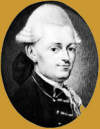
On 6 Jan 1745, Jacques Étienne Montgolfier was born, a French ballooning pioneer, who with his brother Joseph-Michel Montgolfier, developed the hot-air balloon and conducted the first untethered flights. An initial experiment with a balloon of taffeta filled with hot smoke was given a public demonstration on 5 Jun 1783. This was followed by a flight carrying three animals as passengers on 19 Sep 1783, shown in Paris and witnessed by King Louis XVI.
The big day was 21 Nov 1783, when their balloon carried the first two men on an untethered flight—the first manned balloon flight. For more on the Montgolfier Brothers, read this site's web page: The Montgolfier Brothers: Pioneer Balloonists.

On 6 Jan 1745, Jacques-Etienne Montgolfier was born, French ballooning pioneer, who with his brother developed the hot-air balloon and conducted the first untethered flights. Today's book pick is: The Montgolfier Brothers and the Invention of Aviation, 1783-1784: With a Word on the Importance of Ballooning for the Science of Heat and the Art of Building Railroads (Princeton Legacy Library), by Charles Coulston Gillispie. This is a definitive historic work by the same science historian who was the chief editor for the fifteen-volume, shelf-long set of the Dictionary of Scientific Biography. For his book on the Montgolfier brothers, Gillespie uses archival sources to describe not only their ballooning projects, but also their other science and technological contributions, such as Joseph Montgolfier's work with internal combustion engines.
It is available from Amazon, typically about New from $57.50. Used from $3.75. (As of earlier time of writing - subject to change.)
 | The universe flows, carrying with it milky ways and worlds, Gondwanas and Eurasias, inconsistent visions and clumsy systems. But the good conceptual models, these serena templa of intelligence on which several masters have worked, never disappear entirely. They are the great legacy of the past. They linger under more and more harmonious forms and actually never cease to grow. They bring solace by the great art that is inseparable from them. Their permanence relies on the immortal poetry of truth, of the truth that is given to us in minute amounts, foretelling an order whose majesty dominates time. |
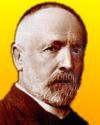 | A set is a Many that allows itself to be thought of as a One. |
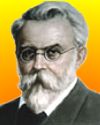 | Thought isn’t a form of energy. So how on Earth can it change material processes? That question has still not been answered. |
| Before you look at today's web page, see if you can answer some of these questions about the events that happened on this day. Some of the names are very familiar. Others will likely stump you. Tickle your curiosity with these questions, then check your answers on today's web page. | |
| Births | |
 | On 6 Jan 1745, Jacques Étienne Montgolfier was born, a French pioneer of the hot-air balloon with his brother, Joseph-Michel. An initial experiment with a balloon of taffeta filled with hot smoke was given a public demonstration on 4 Jun 1783. This was followed by a flight carrying three animals as passengers on 19 Sep 1783. One of these animals was named Montauciel (Climb-to-the-sky). What were the three animals on the first "passenger" flight? |
| Deaths | |
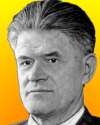 | Pavel Alekseyevich Cherenkov (1904-1990) was a Soviet physicist who shared the 1958 Nobel Prize for Physics with fellow Soviet scientists for their investigation of the phenomenon exhibited by electrons as they pass through a transparent medium at a speed higher than the speed of light in that medium. What phenomenon is associated with such very high speed electrons in a transparent medium? |
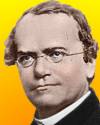 | Gregor Johann Mendel (1822-1884) was a Austrian pioneer of the study of heredity. He made two very important generalizations from his experiments, known today as the Laws of Heredity. Mendel coined the present day terms in genetics: recessiveness and dominance. With what did Mendel experiment to formulate his laws of heredity? |
| Events | |
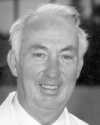 | On 6 Jan of a certain year, the first adult heart transplant in the U.S. was performed at the Stanford Medical Center, Stanford, California, by by Dr. Norman Shumway (pictured). The 54-year-old patient, whose heart had been damaged by virus infection, survived for 15 days after the surgery. In what decade was this U.S. heart transplant operation performed? |
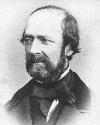 | On 6 Jan 1851, the rotation of the Earth was proved experimentally by a scientist working in the cellar of the house he shared with his mother. Three months later, he demonstrated his discovery to Napoleon. Who was the scientist, and what was his equipment |
Fast answers for the previous newsletter for January 5: decade including the year 1948 • the decade including the years 1901 (application) or 1904 (issued) • peanuts (one of his products was peanut butter) • diabetes • decade including the year 1896 • Golden Gate Bridge.
 If you enjoy this newsletter, the website, or wish to offer encouragement or ideas, please send feedback by using your mail reader Reply button.
If you enjoy this newsletter, the website, or wish to offer encouragement or ideas, please send feedback by using your mail reader Reply button. Your click on a Facebook, StumbleUpon, or other social button on the site webpages is also a welcome sign of appreciation. Thank you for using them.
© This newsletter is copyright 2020 by todayinsci.com. Please respect the Webmaster's wishes and do not put copies online of the Newsletter — or any Today in Science History webpage. (If you already have done so, please remove them. Thank you.) Offline use in education is encouraged such as a printout on a bulletin board, or projected for classroom viewing. Online, descriptive links to our pages are welcomed, as these will provide a reader with the most recent revisions, additions and/or corrections of a webpage. For any other copyright questions, please contact the Webmaster by using your mail reader Reply button.
--
If you do not want to receive any more newsletters, Unsubscribe
To update your preferences and to unsubscribe visit this link
Executive Real Estate Business Class
-
"It was like a man with wings. It wasn't like anything you'd see on TV or in a monster movie." ...
About the publisher
Search This Blog
Blog Archive
-
▼
2021
(585)
-
▼
January
(109)
- Ian Kershaw on why Hitler declared war on America
- On This Day for January 31 - Guy Fawkes executed i...
- Newsletter for Sunday 31 January.
- January 31: Slavery Abolished in the USA, Guy Fawk...
- On This Day for January 30 - “Great Soul” assassin...
- Newsletter for Saturday 30 January.
- January 30: Oliver Cromwell Ritually Executed, Mah...
- On This Day for January 29 - Iraq, Iran, and North...
- Newsletter for Friday 29 January.
- January 29: Romeo and Juliet, Coca-Cola and the Se...
- 'The Food That Built America' Is Back!
- On This Day for January 28 - Explosion of the spac...
- Newsletter for Thursday 28 January.
- Inside The Still-Mysterious Circumstances Of Heath...
- Demystified: What’s the Difference Between a Presi...
- On This Day for January 27 - Vietnam War ended, Wo...
- Newsletter for Wednesday 27 January.
- January 27: Kaiser Bill is Born, the Siege of Leni...
- You are now unsubscribed
- What The Wild West Actually Looked Like in 48 Reve...
- New Savings! $50 off Family Memberships
- On This Day for January 26 - First European settle...
- Newsletter for Tuesday 26 January.
- January 26: Catholic Counter-Reformation, British ...
- On This Day for January 25 - Claudius affirmed as ...
- Newsletter for Monday 25 January.
- January 25: São Paulo Founded, Charles Wilkes Disc...
- Queen Victoria and Prince Albert's marriage | Wors...
- On This Day for January 24 - Opportunity's Mars la...
- Newsletter for Sunday 24 January.
- January 24: Scouting for Boys, Apple's Macintosh a...
- On This Day for January 23 - Madeleine Albright sw...
- See All That's Interesting Most Popular Articles
- Please Confirm Subscription To Our Newsletter
- The "Alaskan Avenger" Who Attacked Sex Offenders W...
- On This Day for January 22 - Roe v. Wade ruling, L...
- Newsletter for Friday 22 January.
- On This Day for January 21 - First commercial Conc...
- Newsletter for Thursday 21 January.
- Need Context with Your News?
- Demystified: Where Do Honeybees Go in the Winter?
- On This Day for January 20 - Barack Obama sworn in...
- Newsletter for Wednesday 20 January.
- On This Day for January 19 - Rule in India transfe...
- Newsletter for Tuesday 19 January.
- On This Day for January 18 - German Empire establi...
- Newsletter for Monday 18 January.
- January 18: King of Siam Kills the Crown Prince of...
- Queen Victoria and Prince Albert: was their union ...
- On This Day for January 17 - Hawaiian monarchy ove...
- Newsletter for Sunday 17 January.
- January 17: US-Modoc War, the UN Security Council ...
- On This Day for January 16 - Beginning of Persian ...
- Newsletter for Saturday 16 January.
- January 16: Ivan the Terrible, Louis XVI's Death S...
- The Tragedy Of David Reimer, The Boy Forced To Liv...
- On This Day for January 15 - British Museum opened...
- Newsletter for Friday 15 January.
- January 15: Henry VIII and the Church of England, ...
- On This Day for January 14 - Premiere of Giacomo P...
- Newsletter for Thursday 14 January.
- January 14: The Dutch Conquer Malacca, the US Revo...
- Demystified: Why Does Water Freeze from the Top Down?
- On This Day for January 13 - Émile Zola's “J'accus...
- Newsletter for Wednesday 13 January.
- January 13: 1st Issue of "The Times" of London, Ch...
- On This Day for January 12 - Haiti severely damage...
- Newsletter for Tuesday 12 January.
- January 12: A Day of Coronation, Gandhi's Last Fas...
- On This Day for January 11 - Amelia Earhart's Hawa...
- Newsletter for Monday 11 January.
- January 11: Spices, Morse Code, Insulin and 55 Yea...
- The real history behind Bridgerton
- On This Day for January 10 - Common Sense publishe...
- Newsletter for Sunday 10 January.
- January 10: Thomas Paine Publishes Common Sense, T...
- On This Day for January 9 - Election of Mahmoud Ab...
- THE IGBO LANDING - HOW THEY COMMITTED SUICIDE
- Newsletter for Saturday 9 January.
- January 9: Joan of Arc's Trial, the Daguerreotype ...
- The Biggest Historical Discoveries From 2020 And M...
- On This Day for January 8 - Anniversary of Grimald...
- Newsletter for Friday 8 January.
- January 8: US National Debt Briefly Hits $0, Forma...
- On This Day for January 7 - Galileo's discovery of...
- Newsletter for Thursday 7 January.
- January 7: A Day of Invention - The Typewriter, Hy...
- On This Day for January 6 - Epiphany, Richard II i...
- Newsletter for Wednesday 6 January.
- January 6: Charles I put on Trial for Treason, FDR...
- Meet The Real-Life Goodfellas Whose True Stories W...
- On This Day for January 5 - Golden Gate Bridge con...
- Newsletter for Tuesday 5 January.
- January 5: Richmond Burns, The Nazi Party Forms, A...
- Last Call for 30% off Memberships
- On This Day for January 4 - Burma granted independ...
- Newsletter for Monday 4 January.
- January 4: The Colt Revolver, a 33 Year Strike and...
- Dangers of Victorian London| Roman history quiz | ...
- On This Day for January 3 - Martin Luther excommun...
-
▼
January
(109)
-
Blogroll
-
About
HistoryFact










0 comments:
Post a Comment